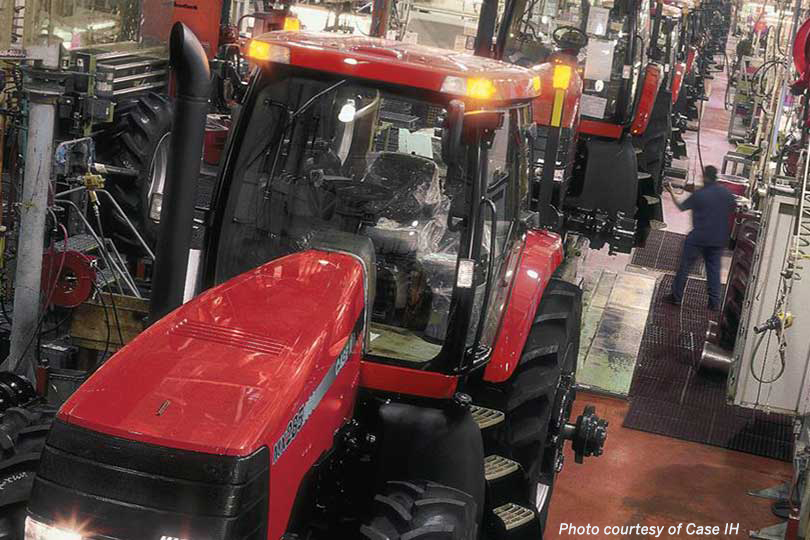By Jessica Domel
News Editor
With uncertainty in the air and low commodity prices on the horizon, farmers and ranchers across the nation are being more careful with their investments, which is affecting farm equipment and parts sales.
The sale of four-wheel drive farm tractors is down a little over 38 percent year-to-date, according to the Association of Equipment Manufacturers (AEM).
Sales of self-propelling combines and 100-plus horsepower two-wheel drive tractors are also down—14.7 percent and 32.9 percent respectively.
“With the farm economy being the way it is, there is more interest in the older vehicles,” Phillip Lauer, product line marketing manager for John Deere, said. “There’s also more interest in what we call all-makes parts.”
All-makes parts are for competitive lines of equipment to complement the full line of John Deere original equipment parts and remanufactured components.
“From the parts perspective, producers are being more conservative. They’re only replacing what they need,” Lauer said. “I think we hope to sell a little more than we sold last year, but it’s a challenge just because of the lower commodity prices.”
When commodity prices were higher, farmers and ranchers would replace more parts, according to Lauer. With prices as low as they have been, spending habits have changed.
“Everybody is being pretty cautious,” Lauer said. “You’re only going to replace parts when absolutely needed for the overall operation of the machine.”
Although equipment sales, for the most part, are forecast to be down, used equipment sales seem to be faring well.
“There are some great buys out there,” Barry Nelson, manager of Media Relations for John Deere, said. “With the new technology that we offer, and some of the parts and attachments, you could basically buy a late model, used tractor or combine and you could put the latest technology on these machines. There are some really good deals out there that our customers are also looking at.”
Not all equipment sales are down, according to AEM.
Sales of under 40 horsepower, two-wheel drive farm tractors and 40-100 horsepower, two-wheel drive farm tractors were up 26 percent and 3.2 percent respectively.
“One of the current market trends and industry drivers is livestock and feed,” Seth Doman, Hay and Forage Marketing Segment leader for New Holland, said. “If a farmer is going to get through the winter, is he going to have to buy feed or does he have a good crop year? There are lots of things that go into an equipment purchase.”
When you add up all the factors, look at the farm income forecast to determine whether or not now is the right time to buy, Doman said.
“We’re still down from where we saw things four or five years ago,” Doman said. “For hay and forage products, the new market is definitely on fire right now. Guys are getting excited about coming into the season, getting ready to get out and actually start mowing hay, baling it up and feeding it out to their animals.”
Doman notes the season and world economy also play a role in equipment and parts sales.
“We’ve seen more farmers in the Midwest and in the southern states replacing the corn, beans and some of the small grain,” Doman said.
Some of those farmers are considering a three-year alfalfa crop rotation to offset the low price of other commodities.
Some note the movement in equipment sales could be due to the cyclical nature of the business itself.
“It began in 2014 with the downturn of cash crop commodity prices— corn, soybeans and wheat—that affected the large producers and the grain producers in North America,” Jim Walker, vice president of Case IH North America, said in an interview with Agri-Pulse. “We’re now going into year three of that. Yet in 2015, we started to see herd sizes catch up to strong demand for beef and we now see dairy prices and beef prices that are falling off. For the first time in a long time in agriculture, it doesn’t matter really what sector you’re in, you have a downturn in your revenue. It’s affecting a lot more people in agriculture.”
For businesses like Case IH, Walker says it’s about keeping a balance in the market and not flooding the market with inventory.
“Back in 2012/2013, the profitability of farm operations was so significant that people were buying just to buy. Th

